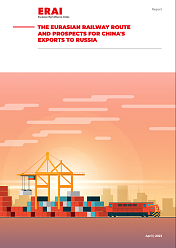Pegged back by sanctions against Russia, the rail network’s usual double-digit annual growth has come to a screeching halt.
First-half volumes increased just 2.3%, to 720,000 teu, according to China State Railway, and by comparison, volumes grew 29% last year and 56% in 2020.
Some forwarders point to Covid lockdowns in China as having an impact on volumes, but most agree the near-overnight boycott of Russian supply chains has had the biggest impact.
Nevertheless, not all shippers gave up on Russian rail freight, while a significant proportion of northern corridor volumes were switched to middle and southern routes.
As a result, the network has maintained at least marginal growth, according to Chinese authorities, enough to trigger congestion at the usual border-crossing bottlenecks.
This week, for example, the China-Kazakhstan border crossings of Alashankou and Khorgos were temporarily closed to help clear a 25,000 teu backlog, according to New Silk Road Intermodal (NSRI).
CEO Jacky Yan said such a suspension was «not unusual» and would not impact fixed-slot train departures. But it would «reduce the space available and cause delays at origin terminals», he added.
In Europe, NSRI said railway repairs were likely to impact transport between Germany and Poland. And the political situation in the Russian enclave of Kaliningrad — where Lithuania has banned the transit of certain Russian goods — has so far not had a material impact on operations.
Igor Tambaca, MD of Rail Bridge Cargo, told The Loadstar the situation had reduced volumes through Kaliningrad, though, as customers had become «nervous about the constant changes of sanctions, so they are relying more on the Belarus-Poland route».
He added: «The southern/middle corridor is getting more popular, which means an increase in congestion. In particular, there are delays from Baku, when transiting through Georgia and Turkey, and also Georgia, through the Black Sea into Constanta.
«That is why we have installed an FCL truck land-bridge between Baku and Central Europe, which means a transit of 10-12 days by truck, compared with 21-22 days by rail.»
Mr Tambaca said there was a growing number of shippers prepared to «let go of ethics» and go back to using the Russian route, given the worsening port congestion in Northern Europe and long sea freight delays.
He explained: «Shipping lines are increasing the number of blank sailings to keep sea rates high, which directly impacts supply chains and sales for large European customers. So it’s their choice to use Russian rail transit and forget about ethics, rather than wait 65-88 days for their goods.
«Average rail transit times from central China to central Europe, via Russia, is only 17-20 days, which is very low compared with sea freight.»
And, given the sea freight challenges, rail freight rates increased by between $300 and $800 in July, Mr Tambaca noted.




